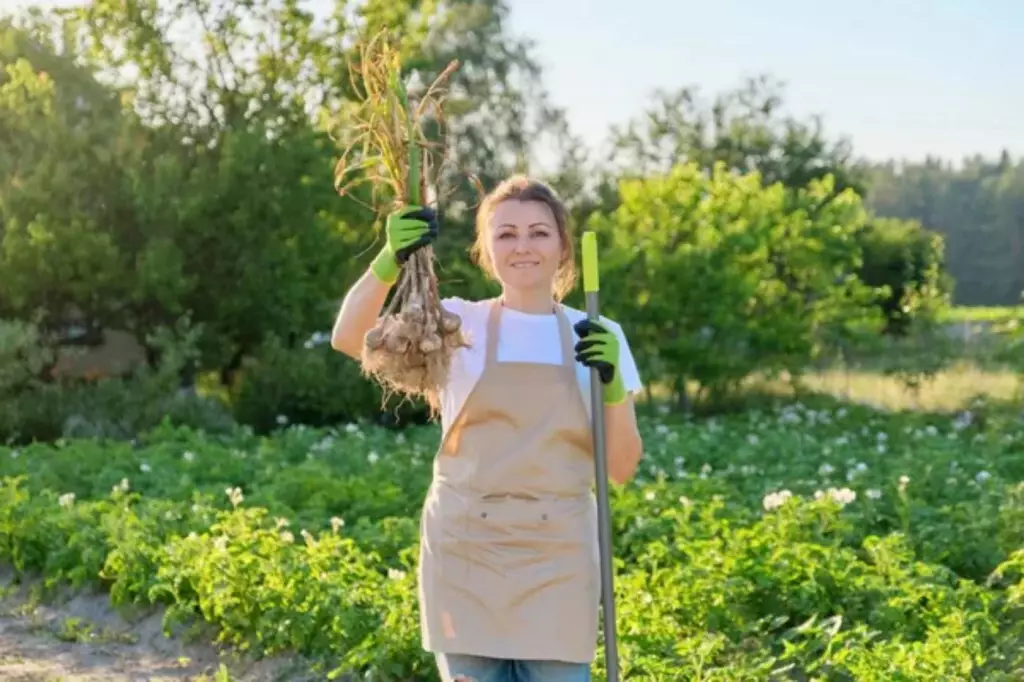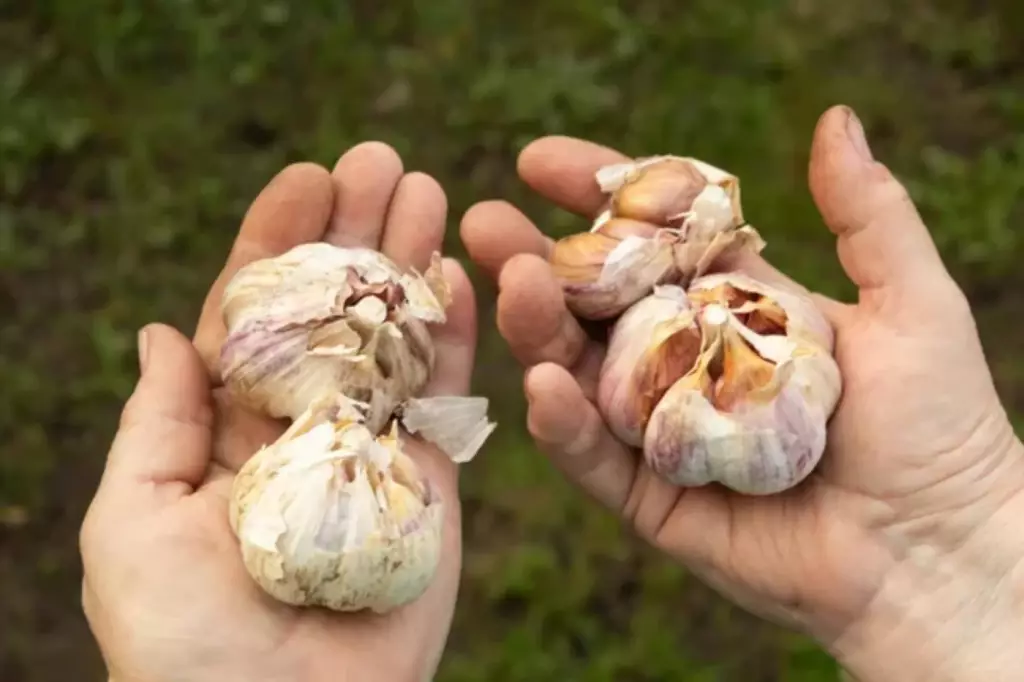Is Garlic Farming Profitable? (Full Breakdown 2024)
Garlic farming, a venture often overlooked in the agricultural sector, has shown significant potential for profitability in recent years. As of 2024, this crop not only caters to a growing culinary demand, but also benefits from relatively low maintenance compared to other cash crops. This article will provide a full breakdown of garlic farming's profitability, exploring factors like market trends, cost analysis, and yield potential.
Garlic farming can be profitable. Average startup costs are $5,000-$7,500 per acre, while ongoing costs include labor, irrigation, and fertilization. Yield per acre ranges from 10,000 to 15,000 pounds, so with market prices averaging $1.50-$2.00 per pound, the gross income per acre can be $15,000-$30,000.
Although garlic farming can be quite profitable, it's not just about planting and harvesting; factors like climate, soil quality, and market trends also play a huge role. If you're curious about turning a garlic bulb into gold, we have useful tips to keep your costs low while earning more profits, so stay tuned!
Summary
- Profit per acre for garlic farming ranges from $8,000-$42,000 with hardneck garlic varieties fetching higher market prices compared to softneck varieties, due to their bold flavors.
- For a farm with $100,000 revenue, $50,000 variable costs, and $10,000-$20,000 fixed costs, the profit margin is 30-40%, which is within the standard 25% to 45% profit margin range for garlic farms.
- Total costs to establish a garlic farm range from $2,000-$40,000 per acre depending on climate, scale, and level of mechanization.

On this page:
Garlic Farming Profit Analysis
In the realm of garlic farming, profitability hinges on factors such as yield per acre, garlic variety, and market prices. Here, you'll discover what returns you might expect from this venture.
Garlic farming profit per acre
| Variety | Yield per Acre (lbs) | Cost to Plant per Acre ($) | Average Price per lb ($) | Estimated Profit per Acre ($) |
|---|---|---|---|---|
| Hardneck | 4,000 - 6,000 | 1,500 - 2,000 | 6 - 8 | 8,000 - 36,000 |
| Softneck | 5,000 - 7,000 | 1,200 - 1,800 | 5 - 7 | 15,000 - 42,000 |
*Profit estimates can vary due to market fluctuations, location, and farming efficiency.

Profit from selling hard-neck garlic
Hard-neck varieties tend to fetch premium prices due to their bold flavors and shorter storage life, typically leading to a golden harvest if the conditions are optimal.
With good management practices, your yield per acre can range significantly, but the goal is to make good money when the market's demand is met.
Profit from selling soft-neck garlic
Soft-neck garlic varieties usually yield higher quantities and are easier to grow due to their resilient nature. They may offer lower market prices compared to hard neck, but their extended shelf life and the ability to produce more pounds per acre can lead to a financially profitable crop.
When grown for profit, control over costs, and selling at the right time are paramount to your success.
Calculating the profit margin for garlic farming
Let's assume a garlic farm has $100,000 in revenue from garlic sales.
The variable costs of growing garlic are around $50,000, including costs for seed, fertilizer, pesticides, labor, etc.
To calculate profit margin:
- Revenue = $100,000
- Variable costs = $50,000
- Gross margin = Revenue - Variable costs = $100,000 - $50,000 = $50,000
Fixed costs could be around $10,000 - $20,000 for things like equipment, storage, marketing, etc.
- Gross margin = $50,000
- Fixed costs = $10,000 (low-end)
- Profit = Gross margin - Fixed costs = $50,000 - $10,000 = $40,000
- Profit margin = Profit/Revenue x 100 = $40,000/$100,000 x 100 = 40%
For high-end fixed costs:
- Gross margin = $50,000
- Fixed costs = $20,000 (high-end)
- Profit = Gross margin - Fixed costs = $50,000 - $20,000 = $30,000
- Profit margin = Profit/Revenue x 100 = $30,000/$100,000 x 100 = 30%
Therefore, the profit margin for this garlic farm would range from 30% to 40%. The profit margin for garlic farming in the US typically ranges from 25% to 45%.
For more tips on how to grow garlic for profit, you can check out more pointers in this article.

Breakdown of Costs in Garlic Farming
The profitability of garlic farming hinges on several key factors that range from soil quality to storage solutions. Below, we've outlined the essential cost components you'll need to consider.
Soil preparation and planting costs
- Soil: Good drainage and fertility are crucial. Soil amendments may be needed.
- Cloves: They are your seed material; costs vary by variety.
| Item | Estimated Cost Range |
|---|---|
| Soil amendments | $50 - $200/acre |
| Garlic cloves (seed) | $500 - $1,500/acre |
Actual cultivation costs
- Irrigation: Essential for consistent growth, especially in dry climates.
- Climate: Influences the irrigation needs; adjust your water budget accordingly.
| Item | Estimated Cost Range |
|---|---|
| Irrigation system | $1,000 - $3,000 |
Harvesting and post-harvest costs
- Mechanization: Investing in tractors or machinery to mechanize the process can save costs.
- Harvesting: Manual labor or mechanical; consider your scale.
- Drying and curing: Essential for quality; requires proper ventilation and space.
| Item | Estimated Cost Range |
|---|---|
| Tractors/machinery | $2,000 - $30,000 |
| Harvesting labor | $200 - $500/acre |
| Drying and curing set up | $100 - $300/acre |
Storage and market preparation costs
- Storage: Proper storage solutions maintain quality.
- Certification as organic garlic: Certification adds value but involves additional costs.
| Item | Estimated Cost Range |
|---|---|
| Storage facilities | $500 - $2,500 |
| Organic certification | $200 - $1,000/year |
Key Elements Impacting Earnings on Garlic Farms
To determine the potential profits from garlic farming, you must consider various critical factors, from cultivation practices to market demands.
Agricultural practices
- Raised bed and drip irrigation:
It's essential to optimize growth conditions using techniques like raised bed cultivation and drip irrigation. Raised beds enhance drainage and root growth while drip irrigation conserves water and targets the roots directly.
| Practices | Estimated Yield Improvement |
|---|---|
| Raised bed | 10-20% |
| Drip irrigation | 15-25% |
- Organic products:
Utilizing organic products can attract a premium price, boost your marketing appeal, and possibly increase your margins. Organic garlic can fetch premium prices even in small farms in Australia, where they are considered one of the most profitable crops.
| Type | Estimated Price Increase |
|---|---|
| Organic garlic | 20-30% |
Market trends
- Gourmet garlic and growing demand:
The rising trend of gourmet garlic and growing demand at farmers' markets, restaurants, and retail outlets can significantly influence your profits.
| Market Segment | Estimated Sales Increase |
|---|---|
| Gourmet garlic | 25-35% |
Gourmet garlic tends to fetch premium prices, some even costing around $16 per pound, so they are one of the most recommended market gardening crops to grow.
Environmental factors
- Local climatic conditions:
Garlic thrives in various climates, but your local climatic conditions will affect plant growth and bulb size, which in turn influence profits. Usually, they grow best in continental climates, where they are considered a good cash crop.
| Climates | Expected Profit Impact |
|---|---|
| Mild | Moderate-high |
| Severe | Low-moderate |
Pests and diseases
Diseases like fungus and pests pose threats to your crop, and their management is crucial for securing the success of your garlic yield.
| Threat | Potential Yield Loss |
|---|---|
| Pests | 5-15% |
| Diseases (Fungus) | 10-25% |
Boosting Garlic Farm Profits
To ensure your garlic farming endeavor is profitable, it's critical to manage expenses meticulously while seeking avenues to enhance income. Here's how you can make smart choices to keep costs low and profits high.

Cost-effective techniques
Creating a cost-efficient operation is vital for your success as a garlic grower. Implementing a garlic growing guide that emphasizes best practices can help. Focus on:
- Soil preparation: Tailor soil amendments according to soil tests to avoid unnecessary costs.
- Pest and disease management: Use preventative measures to reduce the need for expensive treatments.
Estimated cost range for soil amendments
| Soil Amendment | Minimum Cost ($) | Maximum Cost ($) |
|---|---|---|
| Compost | 10 | 50 |
| Fertilizer | 20 | 100 |
| Lime | 15 | 80 |
Estimated cost range for pest/disease management
| Management Type | Minimum Cost ($) | Maximum Cost ($) |
|---|---|---|
| Organic pesticide | 30 | 150 |
| Fungicide | 25 | 120 |
Diversification and specialty marketing
Diversify your garlic crops and consider producing value-added products to expand your market reach and increase revenue streams. Garlic scapes, for example, can be sold as a specialty crop or used to create pestos and pickles.
Revenue streams in garlic farming
| Product | Estimated Revenue Range ($) |
|---|---|
| Fresh garlic | 500 - 7000 |
| Garlic scapes | 200 - 4000 |
| Value-added items | 300 - 5000 |
Optimizing harvest and storage
Harvest time is crucial for maintaining the quality of your crop. Harvesting too early or too late can affect the bulbs' marketability and storage life.
Once harvested, proper curing and drying are essential to prevent spoilage and maximize shelf life, enhancing your potential for profitable sales.
Optimal ranges for harvesting and storage
| Activity | Timeframe (Days) | Temperature (°F) | Humidity Range (%) |
|---|---|---|---|
| Harvesting | 90 - 120 | - | - |
| Curing | 14 - 30 | 70 - 80 | 60 - 70 |
| Long-term storage | - | 32 - 40 | 60 - 70 |
By making strategic decisions in these areas, your journey as a garlic grower can be rewarding, both personally and financially. With hard work and dedicated research into effective practices, you can grow profitable garlic while keeping your costs in check.
Most Profitable Garlic to Grow

Generally, gourmet or specialty garlic varieties, such as Hardneck and Rocambole garlic, tend to fetch higher prices due to their unique flavors and preferences in culinary applications.
| Garlic Variety | Average Price per Pound |
|---|---|
| Hardneck | $6 - $12 |
| Rocambole | $8 - $15 |
| Elephant Garlic | $7 - $10 |
| Porcelain | $10 - $18 |
| Softneck (Braided) | $5 - $8 |
Hardneck garlic:
- Flavor: More robust and complex
- Storage: Shorter shelf life
- Price range: Higher price per pound
Softneck garlic:
- Flavor: Milder, traditional garlic taste
- Storage: Longer shelf life, suitable for braiding
- Price range: More consistent demand, moderately priced
When grown correctly, Elephant garlic, though not a true garlic but more closely related to leeks, can be a hit for its large size and milder flavor.
Porcelain garlic is also notable for its large, easy-to-peel cloves and rich taste, making it a favorite for chefs and food enthusiasts.
Garlic is considered one of the most profitable market garden crops. But to capitalize on the garlic industry's profit potential, try focusing on niche markets that may pay premium prices for high-quality, organic, or locally-grown garlic.
Your profit margin will depend on factors like production costs, market demand, and your ability to reach customers. Gourmet varieties are favored in this niche market, so if you're aiming for the highest profitability, these are the types you might focus on cultivating.
Where to Sell Garlic in Bulk
When considering selling garlic in bulk, you have several options that can help you turn a good profit. Your main avenues include local grocery stores, farmers' markets, restaurants, and food distributors.
Each of these buyers will have different requirements and price points, so it's essential to understand your potential profit margins.
Local grocery stores & farmers' markets
Local grocery stores and farmers' markets are excellent places to start because they often search for fresh, locally sourced produce. Approach these outlets with samples of your product, and be prepared to discuss pricing and delivery schedules.
| Venue Type | Estimated Price Range per Pound |
|---|---|
| Local grocery stores | $3 - $6 |
| Farmers' markets | $4 - $7 |
Restaurants
Restaurants also make great partners, especially if they're focused on high-quality, local ingredients. Forge relationships with chefs and supply managers to secure contracts for regular deliveries.
Food distributors
If you're looking to move large quantities, consider reaching out to food distributors. They can provide access to a wider network of retailers and may buy in bulk but at lower prices due to the volume they purchase.



